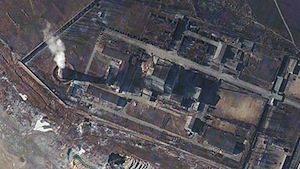NK plant.jpg [1]


North Korea's nuclear program has always been shrouded in secrecy. Over the years the government of the DPRK has been very selective about who sees what and who goes where. On a recent trip to the Yongbyon [2] nuclear complex Ploughshares Fund grantees John Lewis, Robert Carlin and Siegfried Hecker of the Center for International Security and Cooperation [3] (CISAC) were shown a clandestine, industrial-scale, uranium enrichment facility. In an article [4] published by Foreign Affairs, entitled "What I Found in North Korea," Hecker describes the significance of the revelations.
Dr. Hecker believes that the North’s vast illicit procurement network is still thriving, and he was impressed with the scale and complexity of the new facilities, . North Korea was likely incapable of manufacturing these modern centrifuges domestically, so it received help from Pakistan or other countries. Dr. Hecker speculates that North Korea may be cooperating with Iran, given their known collaboration on missile technologies. Iran’s enrichment program is not as advanced as North Korea’s, so cooperation is troubling on both counts.
Dr. Hecker concludes by making some policy recommendations, beginning with a reassessment and renewed commitment to engagement with the North. He writes:
The fundamental and enduring goal must be the denuclearization of the Korean peninsula. However, since that will take time, the U.S. government must quickly press for what I call "the three no's" -- no more bombs, no better bombs, and no exports -- in return for one yes: Washington's willingness to seriously address North Korea's fundamental insecurity along the lines of the joint communiqué. Our Foreign Ministry host framed his no's in terms of no vertical or horizontal proliferation. When we asked specifically if Pyongyang would entertain the concept of three no's and one yes, he said, "If the U.S. government asks that question, I will answer it."
The Joint Communiqué was the culmination of a long diplomatic effort that stated “neither government would have hostile intent toward the other and confirmed the commitment of both to make every effort to build a new relationship free from past enmity.” Dr. Hecker sees hope for this framework for engagement, but we cannot wait, it needs to start now.
Links
[1] https://ploughshares.org/file/2190
[2] http://www.nytimes.com/2010/11/21/world/asia/21intel.html
[3] http://cisac.stanford.edu/
[4] http://www.foreignaffairs.com/articles/67023/siegfried-s-hecker/what-i-found-in-north-korea?page=show